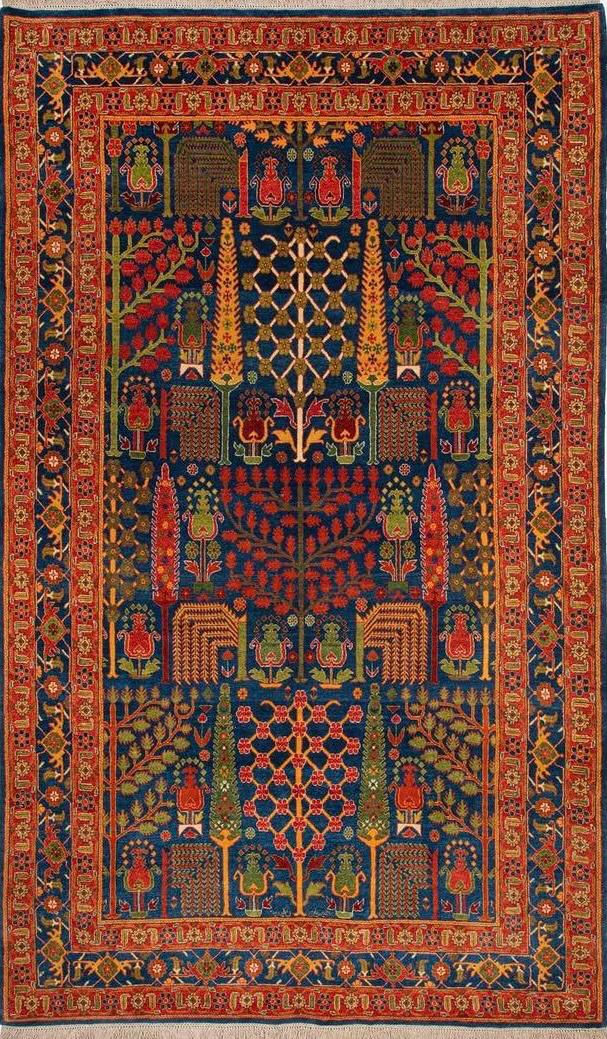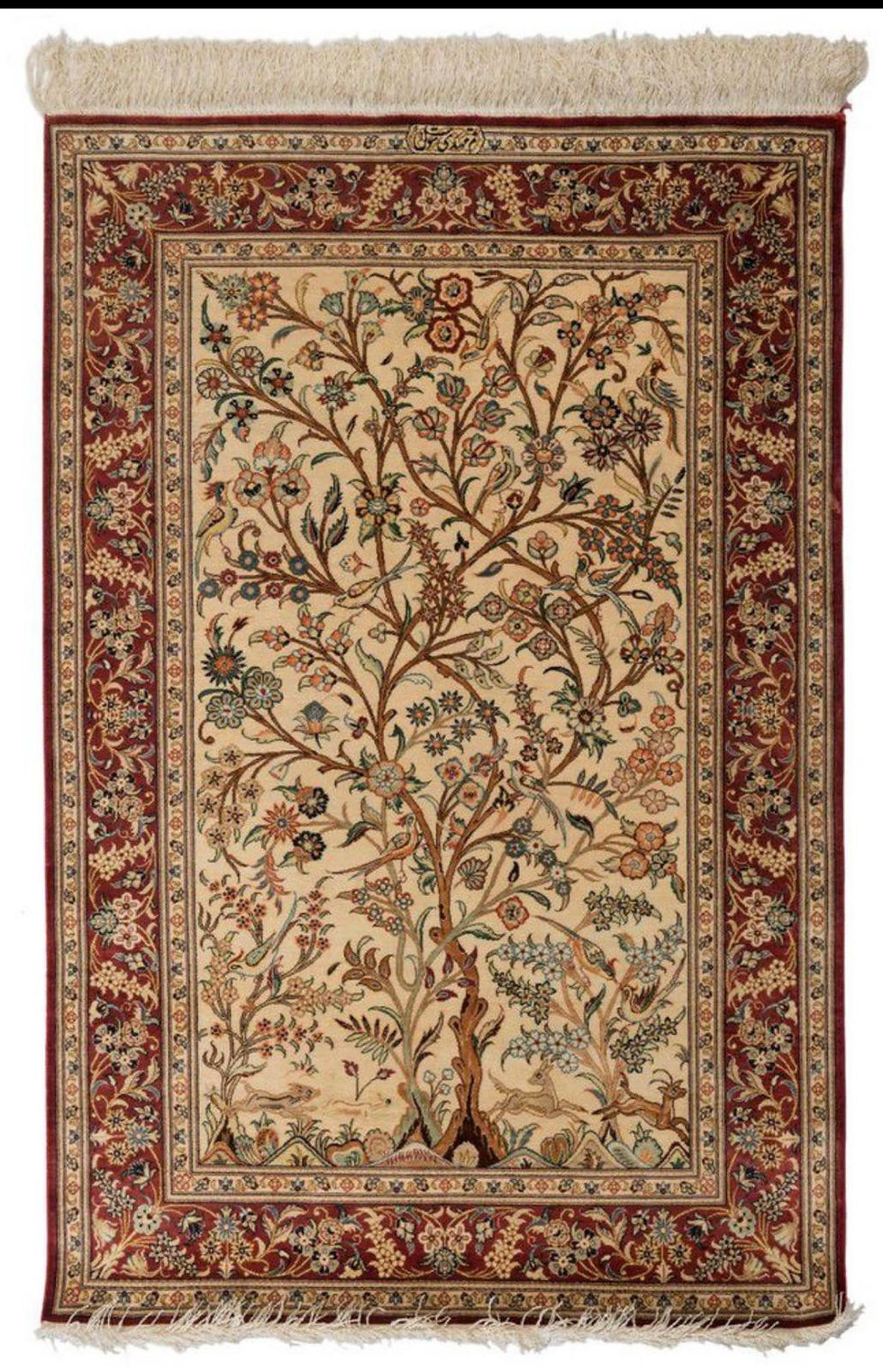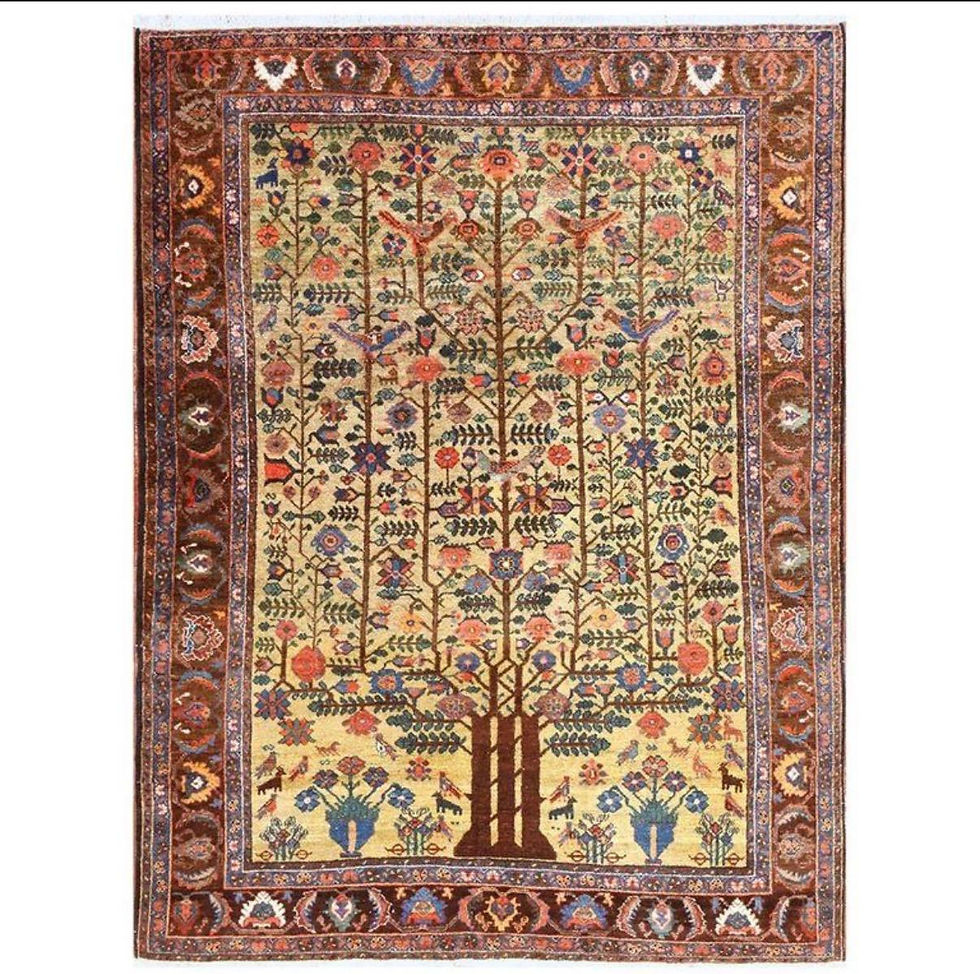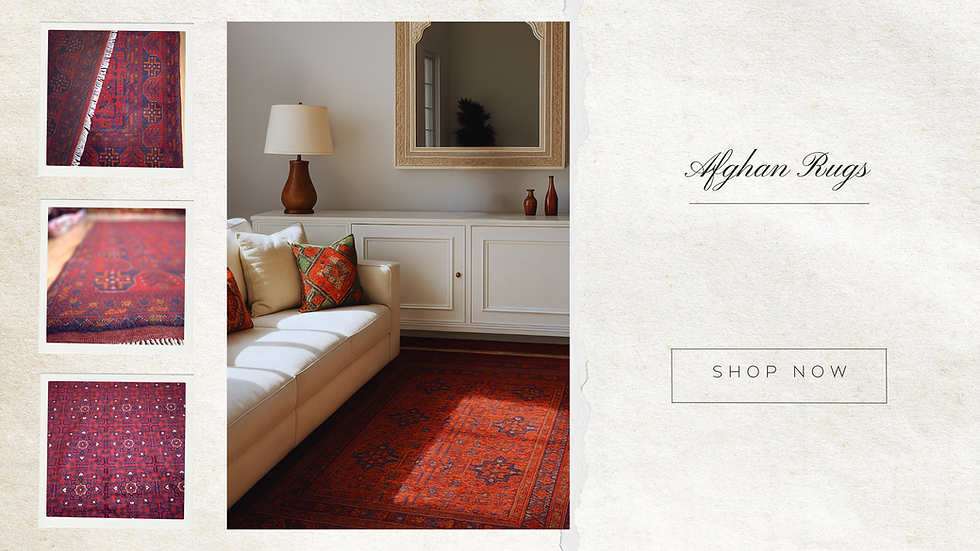The Sacred Tree in Persian Carpets and Culture: From Myth to Motif
- Negin Javaheri

- Aug 4
- 2 min read
n the harsh and sunbaked climate of Iran, a tree is more than a plant — it is a blessing. Rooted in dust, reaching for the sky, the tree has long held a sacred place in Persian imagination. Across centuries, it has symbolized life, resilience, healing, and divine connection.
Ancient Roots: Trees in Persian Carpets Mythology
One of the earliest known literary works in Persian heritage, The Tree of Asuri, takes the form of a dialogue between a wise palm tree and a goat. The tree proclaims its virtues — offering shade, food, shelter, and wisdom. It is not just alive — it is aware, dignified, and sacred.
In ancient Zoroastrian cosmology, the Haoma tree (or Hom) was believed to be the king of all plants, a divine source of vitality, protection, and even immortality. Another tale speaks of the Tree of a Thousand Seeds, growing in the heart of the mythical sea, from which all healing herbs on Earth emerged.
Sacred trees like the Cypress (Sarv) were not just admired, they were revered. People sought blessings beneath their branches, whispered prayers to their trunks, and believed they held the power to untangle fate.

Threads of Symbolism: Trees in Persian Carpets
These stories didn’t remain in scrolls and oral tradition. Over time, the imagery of sacred trees blossomed into Persian visual arts, especially in carpets, where symbols and storytelling meet in wool and color.
Among the most iconic motifs is the Tree of Life — a central pillar of many Persian rugs, representing growth, spiritual ascension, and the eternal cycle of life. Every leaf, every blooming flower, every perched bird woven into these designs holds layers of meaning: hope, paradise, continuity, and beauty born of hardship.
Woven by hand, often by women in remote villages, these carpets are more than decorations — they are maps of ancient beliefs, carried across time and place.

A Living Tradition
The legacy of sacred trees continues. Whether as towering cypress motifs or stylized flowering trees in village weaves, their presence in Persian carpets today is a living tribute to their mythical past.
Next time you see a Persian rug with a tree motif, look again. You’re not just looking at a pattern — you’re glimpsing into the soul of a culture that saw divinity in every root and branch.
Intro Teaser):

Trees have long held a sacred place in Persian culture not just as part of nature, but as symbols of life, power, and protection.
From ancient myths to the heart of handwoven carpets, this is the story of how a single motif grew deep roots in the soul of Persia.





Comentários